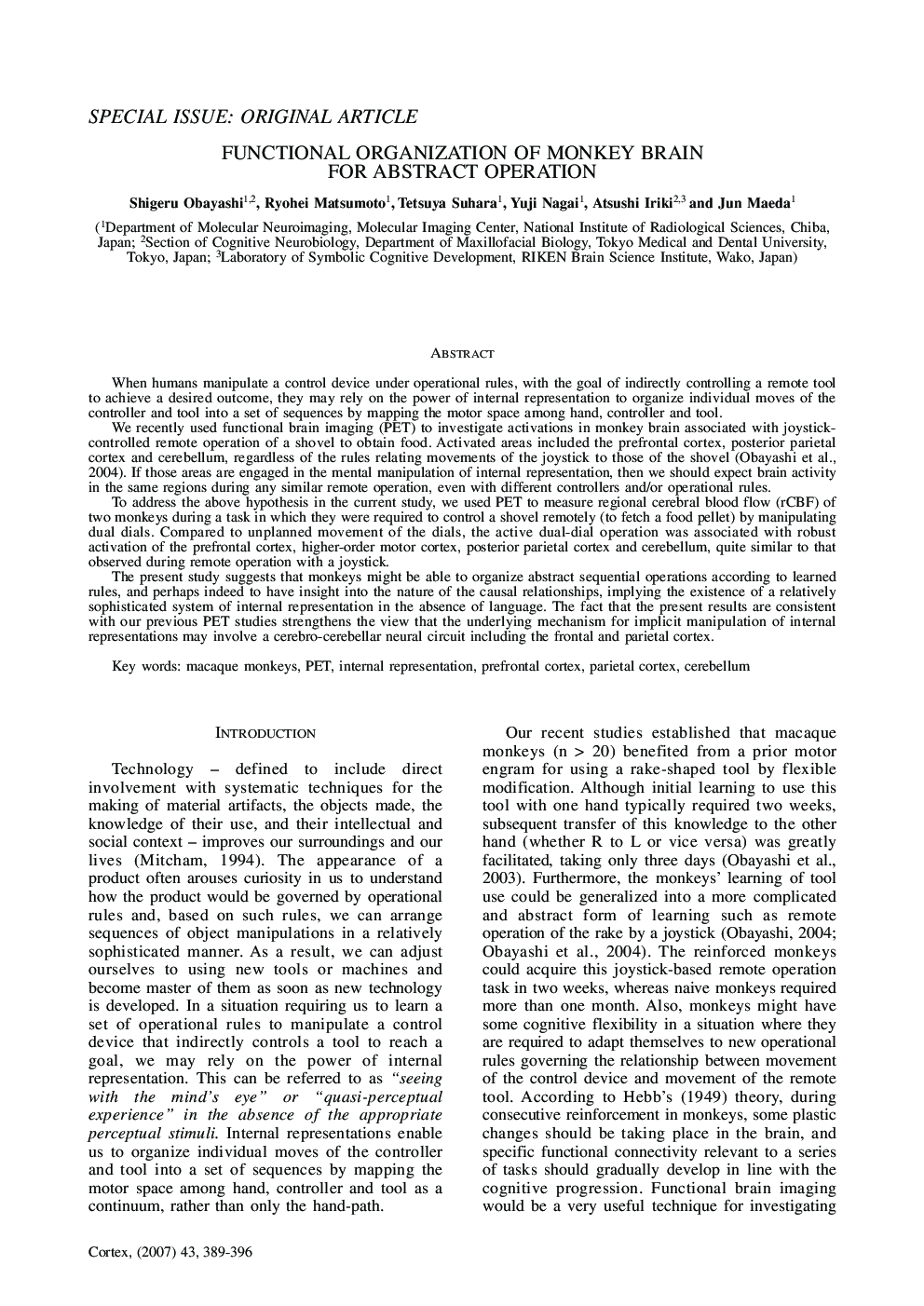| کد مقاله | کد نشریه | سال انتشار | مقاله انگلیسی | نسخه تمام متن |
|---|---|---|---|---|
| 942678 | 925151 | 2007 | 8 صفحه PDF | دانلود رایگان |

When humans manipulate a control device under operational rules, with the goal of indirectly controlling a remote tool to achieve a desired outcome, they may rely on the power of internal representation to organize individual moves of the controller and tool into a set of sequences by mapping the motor space among hand, controller and tool.We recently used functional brain imaging (PET) to investigate activations in monkey brain associated with joystickcontrolled remote operation of a shovel to obtain food. Activated areas included the prefrontal cortex, posterior parietal cortex and cerebellum, regardless of the rules relating movements of the joystick to those of the shovel (Obayashi et al., 2004). If those areas are engaged in the mental manipulation of internal representation, then we should expect brain activity in the same regions during any similar remote operation, even with different controllers and/or operational rules.To address the above hypothesis in the current study, we used PET to measure regional cerebral blood flow (rCBF) of two monkeys during a task in which they were required to control a shovel remotely (to fetch a food pellet) by manipulating dual dials. Compared to unplanned movement of the dials, the active dual-dial operation was associated with robust activation of the prefrontal cortex, higher-order motor cortex, posterior parietal cortex and cerebellum, quite similar to that observed during remote operation with a joystick.The present study suggests that monkeys might be able to organize abstract sequential operations according to learned rules, and perhaps indeed to have insight into the nature of the causal relationships, implying the existence of a relatively sophisticated system of internal representation in the absence of language. The fact that the present results are consistent with our previous PET studies strengthens the view that the underlying mechanism for implicit manipulation of internal representations may involve a cerebro-cerebellar neural circuit including the frontal and parietal cortex.
Journal: Cortex - Volume 43, Issue 3, 2007, Pages 389–396